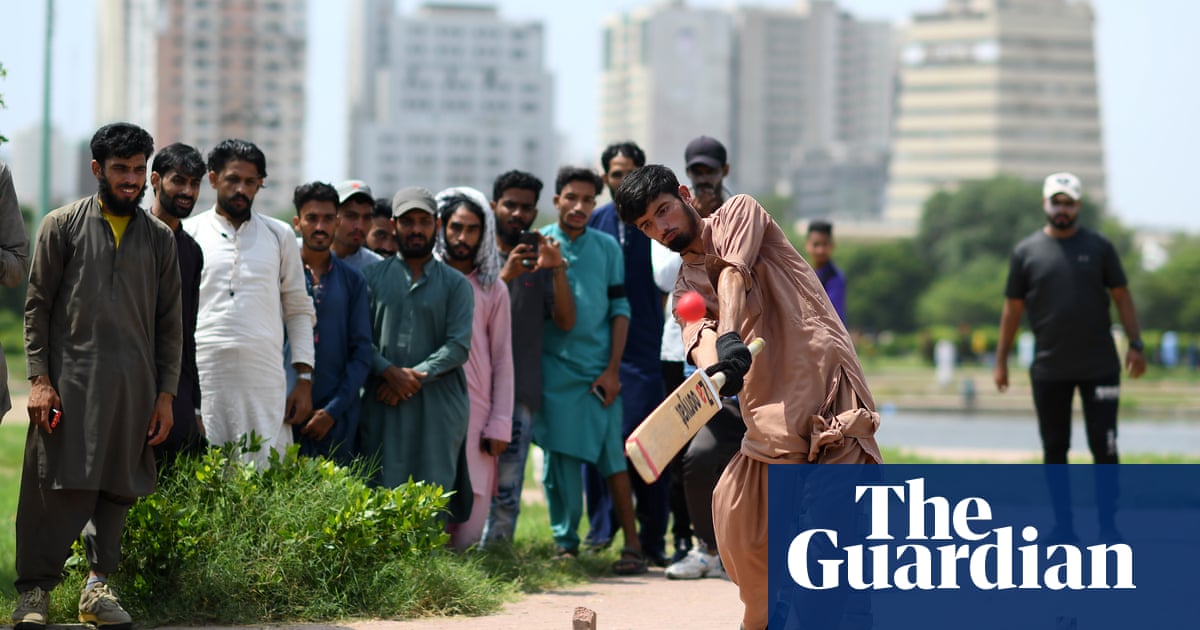Karachi’s renowned Polo Grounds still fertile territory for Pakistani cricket - 5 minutes read

Late Sunday morning, and there is not a scrap of spare ground to be found at Polo Ground in downtown Karachi. Every last patch of its 20 acres of path and grass is taken up with games of tape-ball cricket. There must be 30, 40, 50 overlapping matches — enough, anyway, that it is impossible to count the hundreds of players who are scattered all around, the fielders mixing with each so that, if the man at mid-wicket in one game turned on the spot, he could play cover in another, or fine leg for a third. Outside India, and the Oval Maidan in Mumbai, there is not a sight in cricket quite like it.
The place is officially known as the Gulshan-e-Jinnah but no one will be able to give you directions if you call it that. Polo Ground, on the other hand, everyone knows. Everyone in Karachi cricket has played here over the years. Back in the late 1940s and early 1950s it was where Hanif Mohammad and his four brothers learned the game. They had only just moved to the city after partition. “One could see hundreds of people, mostly youngsters, playing cricket there every day,” Hanif wrote in his autobiography. “Whoever came first would choose his own spot and pitch his stumps for practice or for a match. Even the maulvis would join in.”
His younger brother Mushtaq told Peter Oborne how “when we were still small, my youngest cousin Iqbal and my older cousin Nisar and I would set out every Sunday with just two annas each in our pockets, and we headed to Polo Ground in the centre of the city where many teams used to be playing matches with intermingled field placings”. He has still not forgiven his older brothers for making him the 12th man. Soon enough Mushtaq and his brother both graduated to the old Gymkhana ground over next door’s wall, where Pakistan played some of their earliest games against MCC and other teams.
In the 1960s the government used Polo Ground for military parades and after that it had a reputation as a spot where young lovers would come to meet each other. That stopped, the story goes, when a TV crew came and made a show in which the presenter went around asking the couples whether they had told their parents they were visiting the park together. The cricketers, though, have always been here. For years players have come from all over the country to play in this park in Karachi as they try to find their way in the game. These days they dream of making it much further than the Gymkhana, to the National Stadium, further out of town.
Even he does not try to pick his way through the middle of the park. Play does not stop for strollers, and besides there are no free paths left. The pavements make the best wickets. The latecomers have to play in the grass out by the fences, where, if they are unlucky, the ball will slip through the railings and run into the road outside.
The littlest kids, five and six, are there too, out on the mud boundary that runs around the park. Inside that it is all more serious. There is still a lot of laughter but it is the bragging kind. Almost everyone who bowls here wants to be fast, and plenty really are, and almost everyone who bats wants to hit sixes, and most do. So the balls fly all over, till they plug in the long grass, where they are fetched by the unsighted fielders running around behind trees and bushes and pavilions trying to follow the bowler’s cries of “catch”. Some even have to fetch the ball from out of the muddy pond in the middle.
Some players wear shalwar kameez, some are in jeans and tees, but plenty are in lurid cricket kit, bright strips and brilliant slashes, some of them from Pakistan Super League, one even in an England top, but many of the rest are from local teams, the Rising Stars, the Young Fighters.
They use teetering piles of bricks as wickets, or sets of soldered metal stumps, and keep bags of replacement balls ready. The ground is littered with chewed-up scraps of red tape, offcuts from where it has been wound around the tennis balls to improve the swing and bounce. It seems there is always one guy who has the knack of doing it, and the players will toss him old ones to repair with the stuff he keeps in his bag.
The sorry part of it all is that it is so close to England’s team hotel, hardly five minutes walk along the way, but the players themselves get to see it only through the tinted windows of their coach as they pass by on the way to training. There is palpable frustration among some of them, especially the ones who have been here before to play in the PSL, that the security cordon is so tight that they cannot even walk to the park. They may not get to see it but they can be sure everyone playing here will be watching them on Tuesday and, likely as not, somewhere among them will be the bowler they will be facing when they come back here in a few years.
Source: The Guardian
Powered by NewsAPI.org